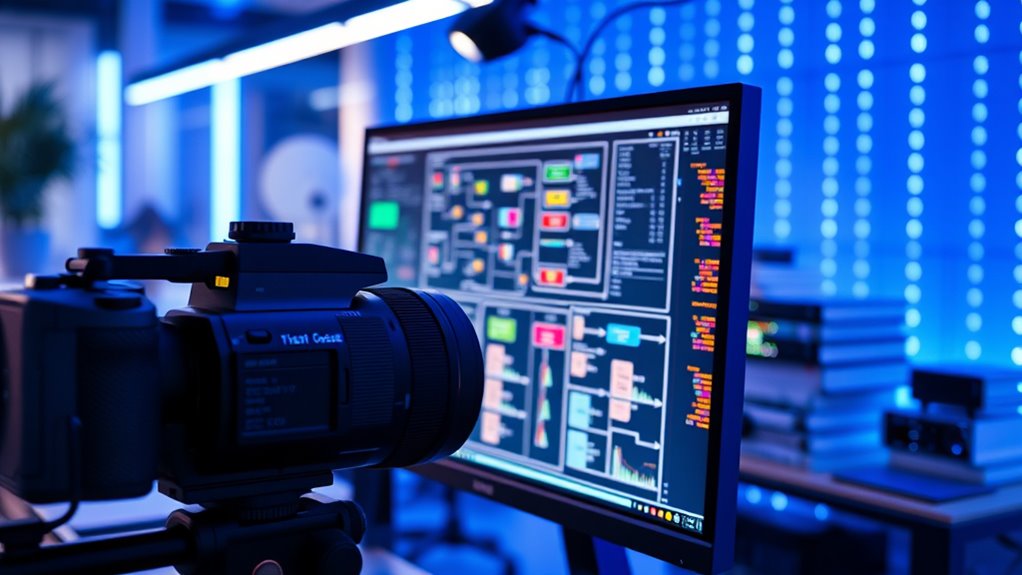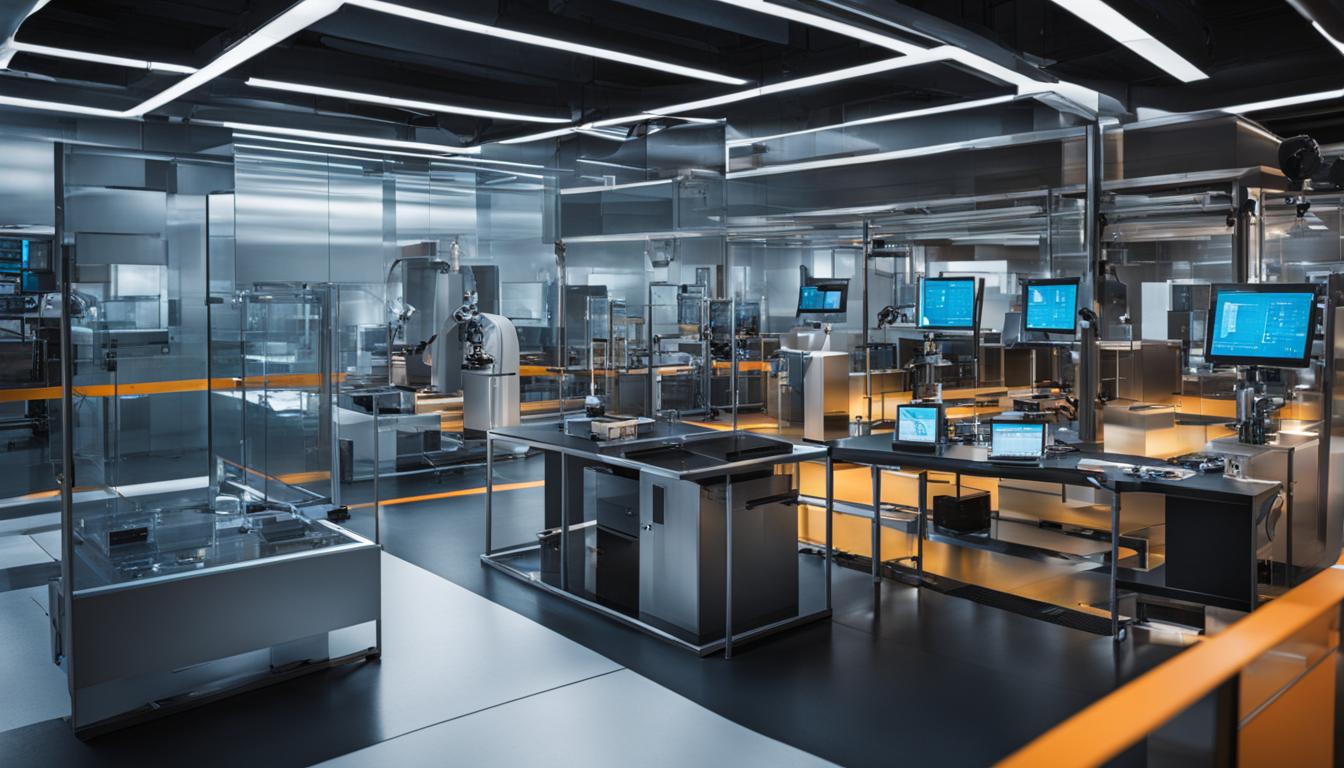AI-driven test case generation is more than hype; it’s a game-changer for elevating testing efficiency and coverage. It helps you create effective test scenarios quickly, identify edge cases, and adapt seamlessly to code changes. This technology reduces manual effort, minimizes human bias, and improves test accuracy, enabling early bug detection. To see how this innovation can transform your testing process and uncover its full potential, keep exploring further.
Key Takeaways
- AI-driven test case generation significantly improves coverage and efficiency but is not a complete replacement for human testers.
- It automates scenario creation, reducing manual effort and enabling early detection of edge cases.
- While effective, AI requires human interpretation and judgment for complex or nuanced testing.
- Integration with existing workflows enhances continuous testing and adapts to software changes seamlessly.
- Overall, AI is a valuable supplement that accelerates testing but should be part of a comprehensive quality strategy.

AI-driven test case generation is revolutionizing software testing by automating the creation of effective test scenarios. Instead of manually designing test cases, you now have tools powered by artificial intelligence that analyze your code, user stories, and requirements to generate relevant tests. This shift remarkably accelerates the process of test automation, enabling you to cover more ground in less time. With traditional testing methods, creating extensive test suites can be tedious and error-prone, often leaving gaps in coverage. AI changes that by systematically identifying potential failure points and simulating various user interactions, ensuring your testing is thorough and consistent.
AI automates test scenario creation, enhancing coverage and efficiency in software testing.
As someone involved in quality assurance, you’ll appreciate how AI-driven test case generation enhances accuracy and reduces human bias. Manual test creation can overlook edge cases or complex scenarios, but AI algorithms can process vast amounts of data and identify patterns that might escape human testers. This means your testing becomes more robust, catching bugs early and improving overall software quality. It also frees up your team to focus on higher-level testing strategies, exploratory testing, and user experience improvements—areas where human intuition plays an essential role. In this way, AI acts as an amplifier for your QA efforts, making your testing more efficient and reliable.
Furthermore, AI-powered tools adapt to changes in your codebase quickly. As your application evolves, manually updating test cases becomes increasingly cumbersome. AI tools can automatically regenerate or modify test scenarios based on recent code changes, ensuring your test suite remains current without substantial manual intervention. This continuous integration of AI-driven test case generation supports a seamless, ongoing process of quality assurance, reducing downtime and increasing confidence in your releases. You’ll find that this approach not only saves time but also minimizes the risk of deploying untested or under-tested features.
However, it’s essential to recognize that AI isn’t a silver bullet. While it boosts test automation and improves quality assurance, you still need skilled testers to interpret results and handle complex scenarios that require human judgment. AI can generate many test cases efficiently, but understanding the context and strategic testing still falls to your expertise. When used correctly, AI-driven test case generation becomes a powerful supplement to your testing toolkit, helping you deliver higher quality software faster. It’s not about replacing testers but empowering them to focus on more meaningful, creative, and complex aspects of quality assurance that machines can’t replicate.
Frequently Asked Questions
How Does Ai-Generated Testing Compare to Manual Testing Accuracy?
You might wonder how AI-generated testing compares to manual testing accuracy. AI often offers higher algorithm efficiency, quickly identifying more edge cases than manual testers. However, user trust is essential, as humans still verify AI results to guarantee reliability. While AI can improve test coverage, combining both methods ensures accuracy, balancing speed with thoroughness. This partnership ultimately enhances confidence in your testing process.
What Industries Benefit Most From Ai-Driven Test Case Generation?
Imagine a lighthouse guiding ships through fog—that’s how industries like healthcare automation and financial fraud detection benefit from AI-driven test case generation. You can see healthcare systems improve patient safety, while financial institutions catch fraud faster. These industries need reliable, rapid testing to navigate complex, high-stakes environments. AI acts as your beacon, illuminating potential issues and ensuring accuracy, making your testing more effective and efficient in critical sectors.
How Can Organizations Integrate AI Testing Into Existing Workflows?
You can easily integrate AI testing into your existing workflows by starting with test automation tools that support AI features. Identify repetitive tasks that AI can handle and incorporate these into your process gradually. Use seamless workflow integration strategies, like APIs or plugins, to guarantee AI-driven test case generation enhances your current systems without disruption. This approach boosts efficiency and accuracy while maintaining your established testing practices.
Are There Ethical Concerns With AI Automating Test Creation?
While automating test creation might seem like a leap forward, it raises gentle questions about ethics. You need to contemplate privacy concerns, ensuring sensitive data stays protected. Bias mitigation is also vital, as AI systems can unintentionally reinforce stereotypes. By staying mindful of these issues, you can harness AI’s benefits responsibly, making testing more efficient without compromising integrity or fairness.
What Are the Costs Associated With Implementing AI Test Generation Tools?
When you consider implementing AI-driven test generation tools, you should be aware of the cost implications. These include licensing fees for software, ongoing maintenance, and potential training expenses for your team. While the initial investment might seem high, it can lead to long-term savings by increasing testing efficiency. However, you need to weigh these costs carefully against the benefits to guarantee the investment aligns with your project goals.
Conclusion
So, is AI-driven test case generation the holy grail or just hype? As you navigate this tech frontier, remember that even in the age of AI, a trusty quill can’t replace critical thinking. While AI can accelerate your testing process, don’t forget to keep your wits about you—like a seasoned detective in a noir flick, always question the results. Embrace the future but stay sharp; after all, technology’s just a shiny new gadget without your judgment.
Randy serves as our Software Quality Assurance Expert, bringing to the table a rich tapestry of industry experiences gathered over 15 years with various renowned tech companies. His deep understanding of the intricate aspects and the evolving challenges in SQA is unparalleled. At EarnQA, Randy’s contributions extend well beyond developing courses; he is a mentor to students and a leader of webinars, sharing valuable insights and hands-on experiences that greatly enhance our educational programs.










